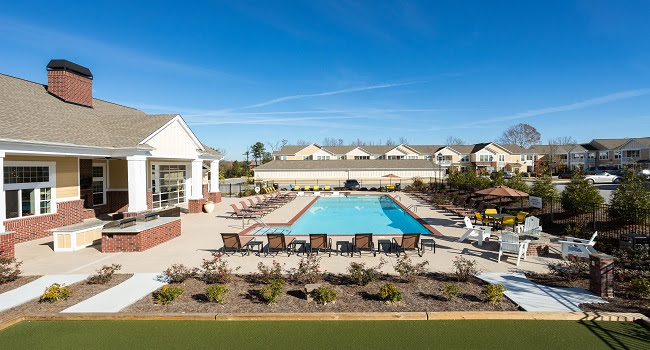
DEMAND FOR MULTIFAMILY REMAINS STRONG AND COULD EXPAND

Hollywood – October 8, 2018
The years-long trend of demand meeting new supply in multifamily doesn’t show signs of slowing down, much to the surprise of many experts. Historically, new builds and vacancy rates have followed a pattern of surges and lulls, but that trend could be changing for the long-term.
So, what’s driving the change?
New demographic patterns and a new kind of renter
In September, GlobeSt. shared recent data that showed a large uptick in the United States absorption rate: “In the past two decades, annual absorption during growth cycles averaged between 144,000 units and 189,000. But ever since the start of the present boom, households’ higher propensity to rent drove the annual average absorption up to 260,000 units.”
That “higher propensity to rent” seems to be what’s at work here. In past growth cycles, new builds met the demand of growing populations. Now, the way people think about housing choices is leading to even stronger demand.
Compared to the previous generation, the level of millennial home ownership sits 8.4 percent lower, according to GlobeSt. data. In addition, there are now fewer married couples overall (48 percent now vs. 60 percent in the generation X era). That’s significant, because single-person households are also more likely to be renter households.
The average age of home ownership also continues to rise: up to 30.1 from 29.5 earlier this year. That means more people renting for longer periods of time, even if they do plan to buy eventually.
Renters by choice vs. renters by necessity
While many renters would choose to buy, but can’t for financial reasons, an increasing number of people simply don’t want to buy a home. That’s a big change from past generations who viewed home ownership as the ultimate American dream.
What’s the dream now? Flexibility, access to amenities, low-maintenance living, a sense of community that a multifamily property can provide, access to nearby dining and entertainment, and more. The reasons vary from individual to individual, or from family to family, but more people report a desire to rent.
A recent study looked at this trend in the Atlanta market. Sponsored by the Atlanta Regional Commission, the study showed that number of higher-income renters has increased in the past 10 years. During that time, the number of renters with incomes higher than $75,000 increased from 69,000 to 181,000.
The Atlanta Journal-Constitution reports that: “The need for flexibility is only one of the reasons behind a growing number of people in metro Atlanta who find renting places to live more appealing than buying, even though they have good paying jobs.”
A variety of factors have resulted in a striking drop in home ownership nationwide: 62.9 percent now vs. 70 percent in 2005. That adds up to a need, across the country, for apartment homes at various price points.

Unmet demand for affordable luxury and affordable housing
One significant caveat in the conversation about supply and demand centers on property classes and locations. Many new builds have focused on the high-end, core urban luxury market, and developers have focused those builds mostly in the top five markets. That leaves opportunity for other properties to meet the unmet demand for more affordable properties in other markets; with “affordable” falling into two categories:
· Affordable luxury – for higher-income renters who want a well-appointed home without a top-market price tag.
· Affordable mid-range – to meet workforce housing needs across income levels in many markets across the country.
When someone follows a job into a new area, they have an immediate need for housing. While some might choose luxury properties in urban centers, not all renters want – nor can they afford – these high-end apartments. Many smaller cities and suburban areas show a strong need for both affordable luxury and mid-range apartment homes to support a growing economy and its associated workforce.
A Forbes contributor calls the disparity between urban luxury and mid-range apartment supply “a niche opportunity for savvy multifamily investors.” An investment in properties that meet this demand equates to an investment in the U.S. workforce, she says.
In addition, an increasing number of renters now seek out suburban locations rather than urban ones. Buildium cites a RentCafe survey, which: “…uncovered an unfolding trend of renters choosing suburbs over cities. In 19 of the 20 largest American metro areas, the number of suburban renters increased faster than the number of urban renters between 2011 and 2015.
The trend is particular pronounced in four markets: Atlanta, St. Louis, Riverside, and Boston, where the city’s suburbs gained three times more renters than their urban areas. In Atlanta, for example, the suburban areas gained 26% more renter households during the study period compared to its urban areas, which experienced just 10% growth.”
Savvy investors realize the potential of multifamily investments outside the top five markets. Smaller markets and suburban areas show tremendous opportunity to meet strong rental demand.
